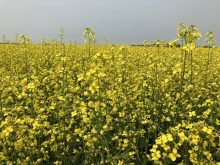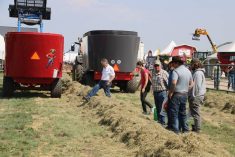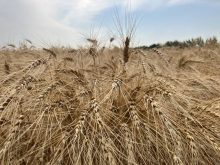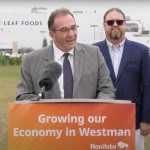Some saw a statistical glass half empty with fewer farms, older farmers, rising input costs, squeezed margins and increased off-farm work.
“This does not look like an industry that is sustainable,” said Canadian Federation of Agriculture president Bob Friesen. “It illustrates what we have been saying, that there is a crisis in agriculture and agriculture policy hasn’t turned it around.”
Some saw a more positive scene in the glass: bigger, more diversified farms; greater use of technology and a sharp increase in the number of Canadian farms grossing $1 million or more in 2005.
Read Also

Supreme Court gives thumbs-up emoji case the thumbs down
Saskatchewan farmer wanted to appeal the court decision that a thumbs-up emoji served as a signature to a grain delivery contract.
“I would say this reflects a sector that is very resilient, considering the disease and weather problems the industry has faced,” said Catherine Cromey, manager of the census of agriculture for Statistics Canada.
“The fact remains that farming and success are not mutually exclusive and it can happen on both small and large operations,” her agency said in its analysis of the 2006 census result published May 16.
Federal agriculture minister Chuck Strahl saw a mixed message.
“There are messages that farmers are diversifying, farms are getting larger, they tend to use technology more than ever, their net worth is increasing but their net income is not,” he said in an interview.
Like most small businesses, farmers accept that off-farm work is sometimes necessary.
“That’s a pretty common story,” Strahl said. “Most farmers say, ‘if I didn’t work off the farm or my spouse didn’t work off the farm, I wouldn’t be able to make it.’ That’s pretty typical of small business generally.”
The census result confirmed many trends that have been evident in the sector for decades.
Over the previous five years, the number of farmers declined by 7.1 percent to 229,373.
The greatest drop was in Saskatchewan where farm numbers dropped by more than 6,200 – 35 percent of the 17,550 farmer decline across Canada.
However, the census farmer count does not include only operators trying to run a commercial business. A census farm is “any operation that produces agricultural products with the intention of selling them.”
Of the total, 38 percent – 88,392 – had gross sales of less than $25,000 and 65.5 percent – 150,422 – grossed less than $100,000.
The 34.4 percent of farms with gross sales of more than $100,000 accounted for more than 90 percent of farm receipts. The 5,902 farms with gross sales of more than $1 million accounted for 40 percent of total farm sales.
Despite the declining number of farmers, the acreage farmed increased slightly.
Other census findings:
- Only 28 percent of farmland was worked with conventional tillage in 2006 compared to more than 40 percent five years before.
- Summerfallow land dropped 25 percent over five years.
- Input prices rose on average 8.6 percent while prices rose just 1.7 percent.
- Almost half of Canada’s farmers worked off-farm in 2005 to supplement farm income. A much higher proportion of farm families had off-farm income from a working spouse.
- More than 44 percent of census farms reported that expenses were higher than cash receipts, excluding depreciation charges.
Friesen from the CFA said one of the most damning results of the census was news that almost half of all farmers worked off the land to help pay farm bills.
“This is the most drastic indication that something has to be done, that agriculture policy has to be turned around in this country,” he said.
In Regina, Agricultural Producers’ Association of Saskatchewan vice-president Glenn Blakley said the problem is bad policy.
“Saskatchewan agriculture is being slowly strangled by our country’s failure to develop sustainable agriculture policies,” Blakley said in a statement.
From her farm near Laird, Sask., National Farmers Union youth vice-president Kalissa Regier said part of the problem is government policy that favours large over small: “Their idea of renewal is getting smaller farmers out of the business and that particularly hurts younger starting farmers.”
Canadian Cattlemen’s Association vice-president Brad Wildeman said the facts that farmers are aging and more are working off the farm “are not necessarily negatives. Like everyone else, farmers are living longer and there are a lot of good jobs out here that are well paying. Farmers like a standard of living that others have.”
















